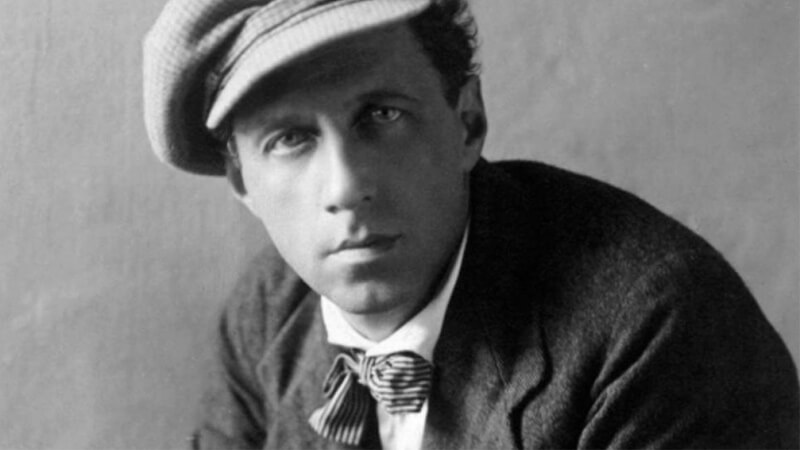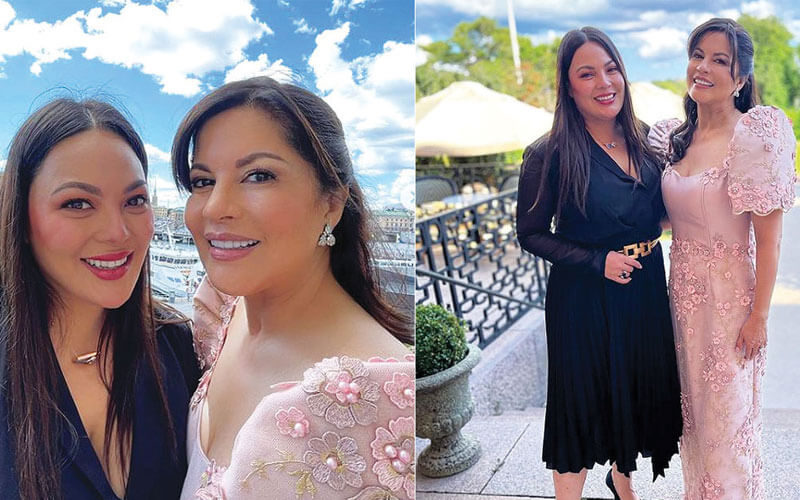Biography of Vsevolod Meyerhold :- Russian theater director and theorist, one of the key figures of the contemporary theater with Stanislavski, who separated himself looking for a path that led him to establish the theory of the convention Conscious and interpretive method that he named Biomechanics .
Biography of Vsevolod Meyerhold
- Born:- 9 February 1874, Penza, Russia
- Died:- 2 February 1940, Moscow, Russia
- Periods:- Symbolism, Futurism
- Books:- Meyerhold on theatre
- Spouse:- Zinaida Reich (m. 1922–1939), Olga Munt (m. 1896)
- Movies:- The White Eagle, The Picture of Dorian Grey
- Children:- Irina Vsevolodovna Meyerhold
His father, Emil, was a rich vodka maker, and Alvina, the mother, was of Baltic descent. The closed environment of family education motivated Meyerhold to always feel more Russian than German and more orthodox than Protestant.
See Also: Biography of Michael Redgrave
At the age of twenty-one he changed his original name (Karl Theodor Kasimir) to Vsevolod, in honor of Vsevolod Garsin, a young pessimistic writer who had committed suicide.
He moved to Moscow to study law, and eventually dropped out to study at the Nemirovich-Dantchenko Drama School in 1896. He began his acting career in 1898 alongside Stanislavski at the newly created Moscow Art Theater.
There it represented mainly works of Chéjov, between which it emphasizes its interpretation in the Gaviota (1898).
Four years later he left the Theater of Art, in disagreement with the naturalistic principles defended by his director and against the Stanislavian techniques of reproduction of moods on stage. From then on he focused on the development of his interpretive theory, which finally coined with the name of Biomechanics.
After a trip to Italy, he organized a theatrical season in Tbilisi in which he gave more importance to the plastic, light and moving conception of the stage than to the psychophysics of the actor, but it was not understood by the public.
In 1905 he was called by Stanislavski to direct the First Theater Studio of the Theater of Art, laboratory of experimental character, where it produced symbolist works in which the actors moved like stylized personages.
Of the relations of these two great directors, Meyerhold himself said: “The fundamental problem of contemporary theater is to preserve the gift of improvisation that owns the actor, without transgressing the precise and complicated form that the director has to confer to the spectacle.
Think as I do, we both approach the solution of the task, like the builders of the tunnel under the Alps: each one moves forward, but in the middle we will surely find ourselves. ” However, the failed revolution of 1905 caused the failure of the Study, which had no practical projection.
Meyerhold went on to collaborate as a director in the company of the actress Vera Komisarjévskaia, in his theater of Saint Petersburg, from November of 1906 with the premiere of Hedda Gabler , of Ibsen.
The conception of the stage as a construction, a structure of stairs, platforms and planes in which the actor is inserted as a gear, which allows an acoustic expressiveness more plastic than psychological, was considered by Vera Komisarjévskaia as a contempt for the work of the Actor, and Meyerhold was fired.
To subsist he directed for ten years the Imperial Theaters under the promise of not trying to scandalize the public with his experiments. He continued his investigations under the supposed name of Doctor Dapertutto , publicizing his achievements through lectures, then published.
For Meyerhold, the theater has to be different from the daily reality, since it is a purely conventional art. He bases his ideas on the training of the actor’s body through a series of exercises, directed to the immediate translation in movements, attitudes and gestures of the moods and intimate reactions of the character.
Moreover, in its most prominent mounts ( Professor Bubus , Inspector , Gogol, Bedbug and The Bath of Maiakowski) as well as the various writings published, systematizes his idea of a theater conscious convention , characterized in that the Spectator does not forget even an instant that has before an actor that represents a personage.
The theater of conscious convention is opposed to the procedure of the illusion of truth that coined Naturalism, defender of reproduction in the scene of the environments and problems of everyday life, with the aim of making the characters a repetition of real types.
He was against the fourth wall, left the lights in the room, suppressed the curtain, and allowed spectators to see the brick walls at the back of the theater so they would not forget that they were attending a performance.
His political profile was definitely remarked when, following the revolutionary outburst of October 1917, he joined Block and Maiakowski in response to the appeal launched by Prime Minister Lunacharski on the new culture.
Meyerhold joined the Communist Party and was appointed director of the theatrical section of the Commissary of Public Instruction; He became, thus, the most important artist of the new Soviet theater. He claimed the role of the actor as a worker.
Theaters became part of a new government body known as TEO and Meyerhold was entrusted with directing the Petrograd, formerly St Petersburg, in which Mayia’s Bufo Mystery premiered to celebrate the first anniversary of the Russian Revolution (1918).
Shortly afterwards the authorities mobilized all the workers of the theater to fight on the fronts, after the outbreak of civil war.
In the month of June of 1919, harassed by the hunger, it left for Yalta. In this trip he was captured by the side of the Mensheviks, who condemned him to death, although he could be saved shortly before the Bolshevik victory.
But it was in 1923, after intense studies on Biomechanics and after maintaining close contacts with the newly appeared Constructivism, when the figure of Meyerhold gained greater institutional relief.
With the publication of a book tribute to his work, entitled Vsevolod Meyerhold , began a new stage that was highlighted in the XI Congress of the Russian Communist Party, which advocated the realization of a communist literature that opposed, by its tendencies, themes and Form, to the disintegrating action of bourgeois literature.
Shortly thereafter, on April 2, the fiftieth anniversary of the director and the twenty-fifth of his theatrical life were celebrated at the Bolshoi Theater in Moscow; In that act received the recognition of “Artist of the Town”.
This stage coincided with the current called “urban style”, developed by some Russian directors, who presented the western city as a conglomeration of perversity and temptations. He emphasized, within this tendency, the spectacle The lake of Ljul , of Alesksey Fajko.
Meyerhold worked with the constructivist artists and filled their stage spaces with movable platforms, stairs and platforms, on which the actors executed precise and mechanical movements.
The one that is recognized like its creative summit arrived in 1926 with the montages of the inspector , of Nikolai Gógol, a radical revision of the classic Russian, and the magnificent cúudo, of Crommelynck.
This work deals with the relations between a husband, a wife and his lover; Meyerhold moved the expression of inner experiences into abstract forms. For example, the lover fell from a slide in the arms of the wife, expressing their joy by jumping.
In 1925, the so-called “party politics in the field of Fine Arts” had been promulgated, in which there was a meeting between the different groups and literary associations: from the Futurists, the Literary Front of the Left, The Proletarian Groups or the League of Poets Peasants.
The first years of the thirties took him on tour in Europe, mainly Berlin and Paris, and gave birth to his work The reconstruction of the theater . This coincided with a series of measures aimed at making the theater more active in the construction of socialism.
The lady of the camellias , in 1934, earned her the most severe criticism of her career and was the latest success for Meyerhold’s actress and wife, Zinaida Rajch, at a time when socialist realism was proclaimed as the ultimate conclusion drawn from the First Pan-Unionist Congress of writers, which had been presided over by Gorky and promulgated the appearance of the so-called “positive hero”.
At the same time, Stalin announced the intensification of the class struggle. Meyerhold was accused of formalism and fell into disgrace.
Other disciples of Stanislavski, who remained faithful to psychological realism, supported by the authorities as a means of mass education, offered him the opportunity to publicly retract, which he refused.
The first accusation made of “deviant” was in 1936 and Meyerhold defended himself with a lecture in Leningrad entitled “Meyerhold against Meyerholdism”, which tried to get past those who declared themselves to be disciples and were merely mere Imitators.
The beginning of the darkest period of his artistic and personal trajectory had his tense moments in the assembly of directors of the same year, in which the Formalism was attacked hard. Meyerhold maintained his positions in front of the general stance.
With the imposition of what has been called “bourgeois photography” as an official style, Meyerhold suffered the attacks of the press and the devaluation of his work in an official way.
He lost his theater and this led him to accept the position of director of rehearsals in the opera house that was directed by his friend and former teacher, Stanislavski, but the death of the master left him without support.
On July 15, 1939, his wife, Zinaida Rajch, was beheaded at his home, which increased his difficulties and suspicions, which led him to send a letter to the Prosecutor of the USSR at the end of the same year, denouncing physical pressures And psychic aspects of which he was being subjected to a statement.
Thus, on 1 February 1940, after months of imprisonment and torture, a military court sentenced him to capital punishment and appears to have been shot on 2 February. His death was silenced.
His name was banned in all Russian publications until 1955, when he was rehabilitated by the Military Commission of the Supreme Court. 1968 was the date when almost all of his work was published in his country, which has had an important influence on the Soviet and European scene.




